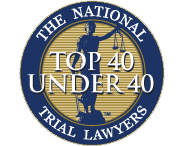Think about your driving routines. You probably take the same routes regularly. For instance, you drive one way to buy food and another to get to work.
Animals do something similar. Deer go to the lake each morning to drink, and bears head out looking for trash cans at night to scrounge for food. When both your and the animals’ routes cross, things become dangerous.
Planning reduces the need for last-minute avoidance of animals
The natural thing to do when you see a bear cub in the road is to slam on your brakes or swerve to try and avoid it. Yet, that could result in more danger.
Anticipating hazards and adjusting your driving in advance is safer. Most local authorities help by setting up warning signs. By working out where the wildlife corridors are, you know where to take extra care when driving.
Here are some things you can do when driving where animals are present:
- Slow down: Hitting a bear cub is one thing. Hitting a full-size bear or deer is another, and both of you won’t have a desirable outcome from it. Reducing speed gives you more time to spot animals and apply your brake.
- Use your lights: Your high beams can help you spot animals at night and allow them to see you better. The eyes of deer and bears both appear yellow in your headlights.
- Leave space between you and the vehicle ahead: If the driver in front hits a large animal, they will slow down quicker than you expect. If you are too close, they may take you with them.
It is not only the animals that you need to watch out for. It’s other drivers. Not everyone drives sensibly, and if a driver coming the other way sees an animal in the road and panics, they may swerve into you. You cannot sue a bear or a deer, but you can claim against a negligent driver.





